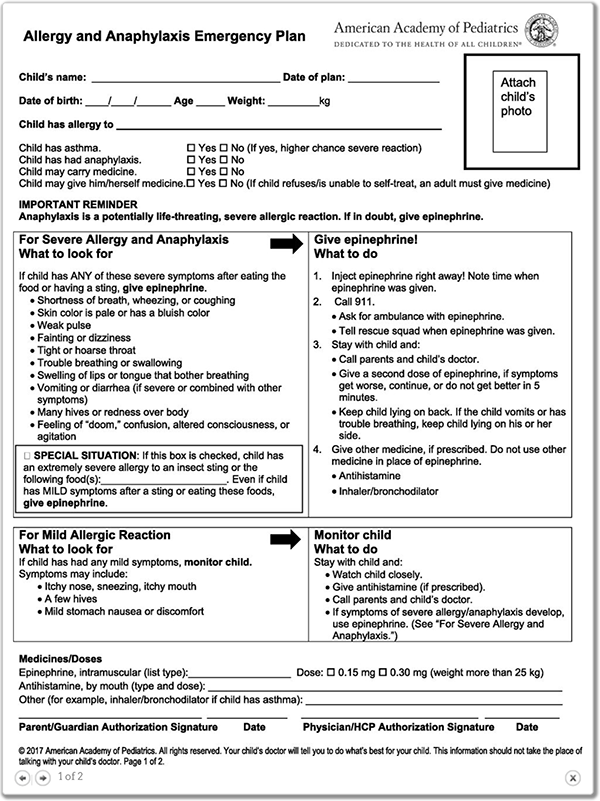Backpack: check. School supplies: check. Lunch box: check. Updated Food Allergy and Anaphylaxis Emergency Plan?
One of the most important strategies for keeping a child with food allergies safe at school is having a clear, concise, updated plan in place for the administration to follow should the unthinkable happen and your child suffers a reaction.
Should epinephrine be administered if your child is showing mild symptoms but is suspected of having consumed an allergen? Should it be administered if your child is known to have consumed an allergen but has yet to show symptoms? What about an antihistamine? Bronchodilator? Who should be called? These questions must be answered immediately because the sooner action is taken, the better the outcome.
Two organizations have developed templates to streamline the process of crafting an emergency plan and each provides detailed instructions.
Food Allergy & Anaphylaxis Emergency Care Plan — from Food Allergy Research and Education (FARE)
Allergy and Anaphylaxis Emergency Plan — from the American Academy of Pediatrics (AAP)
Download and print your template of choice, discuss with your child’s allergist or pediatrician, and have him/her complete and sign the relevant sections.
Once you fill out the remaining sections including emergency contact information, sign the form and make copies for each teacher, the school nurse, and the office staff. Be sure to introduce yourself to each recipient, discuss the severity of your child’s allergies, and step them through the form to make sure they understand when and how to take action.
Consider making additional copies for yourself, family members, babysitters, and everyone else responsible for taking care of your child.
The plan is an essential resource that takes much of the guesswork out of responding to your child’s emergency. It allows each caretaker to follow a predefined script that saves precious time in getting your child the proper meds and emergency care.
Every child with food allergies should have one in place.







